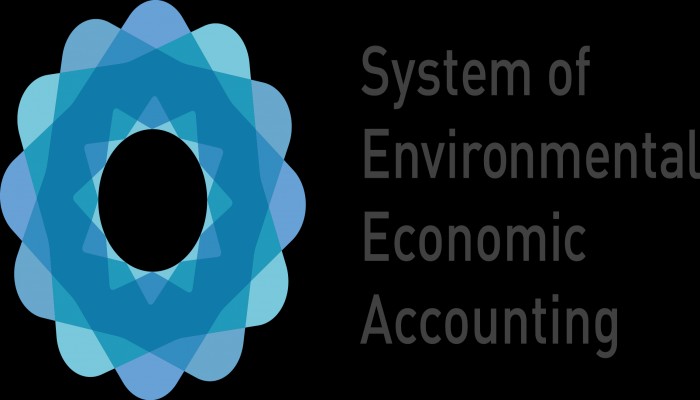Adoption of the System of Environmental-Economic Accounting (SEEA) Framework by the UN: Implications for India’s Meteorological Services
- In Environment & Ecosystem
- 01:22 PM, Mar 27, 2021
- Mukul Asher
Meteorology may be defined as the study of the Earth's atmosphere and the variations in wind, temperature and moisture patterns that produce different weather conditions. Some of the major subjects of study are such phenomena as precipitation (rain and snow), thunderstorms, cyclones, tornadoes, and hurricanes and typhoons.
The importance of good quality National Meteorology and Hydrology Services (NMHS) on a continuous basis, with adaptations to technological developments and changing needs of the stakeholders cannot be overemphasized. This is because range and quality of these services impact on economic, commercial, and national security related activities, particularly for water and food security, and for disaster and climate change management. The impacts of meteorological phenomena are a result of quite complex interactions and are generated with wide variations in time and space. Therefore, the spatial aspects, including in local-level weather forecasting, are also important.
The above source also reports that the SEEA framework is built on five core accounts. These accounts are compiled using spatially explicit data and information about the functions of ecosystem assets and ecosystem services they produce.
The five ecosystem accounts are:
1. ECOSYSTEM EXTENT accounts record the total area of each ecosystem, classified by type within a specified area (ecosystem accounting area). Ecosystem extent accounts are measured over time in ecosystem accounting areas (e.g., nation, province, river basin, protected area, etc.) by ecosystem type, thus illustrating the changes in extent from one ecosystem type to another over the accounting period.
2. ECOSYSTEM CONDITION accounts record the condition of ecosystem assets in terms of selected characteristics at specific points in time. Over time, they record the changes to their condition and provide valuable information on the health of ecosystems.
3. and 4. ECOSYSTEM SERVICES flow accounts (physical and monetary) record the supply of ecosystem services by ecosystem assets and the use of those services by economic units, including households.
5. MONETARY ECOSYSTEM ASSET accounts record information on stocks and changes in stocks (additions and reductions) of ecosystem assets. This includes accounting for ecosystem degradation and enhancement.
The SEEA framework also supports ‘thematic accounting’, which organizes data around specific policy-relevant environmental themes, such as biodiversity, climate change, oceans and urban areas. Other important thematic accounts would include accounting for protected areas, wetlands and forests.
A key aspect of ecosystem accounting is that it allows the contributions of ecosystems to society to be expressed in monetary terms so those contributions to society’s well-being can be more easily compared to other goods and services we are more familiar with. Monetary estimates can provide information for decision-makers, for example for economic policy planning, cost-benefit analysis, and for raising awareness of the relative importance of nature to society1.
As progressing to construct SEEA framework is data and technical knowledge intensive, imperatives of a country considering its adoption regarding how it organizes the meteorological services and how it costs and prices these services have become even more acute. The role of specialist economic analysis of meteorological services has also increased considerably.
Implications for India
It is essential to stress that it is the specific government or public sector organizations which organise particular services and amenities. Improving quality and quantity of these services and amenities therefore requires reforming the organization(s) responsible for them. This is also the case with the meteorological services in India.
In India, IMD (India Meteorological Department) under the Ministry of Earth Sciences (MoES) which is responsible for meteorological services. It is therefore India’s NMHS.
There are different types of operational units such as Meteorological Centres at state capitals, Forecasting Offices, Agrometeorological Advisory Service Centres, Flood Meteorological Offices, Area Cyclone Warning Centres and Cyclone Warning Centres2.
For the convenience of administrative and technical control, there are 6 Regional Meteorological Centres at Mumbai, Chennai, New Delhi, Kolkata, Nagpur and Guwahati. There are also different types of operational units such as Meteorological Centres at state capitals, Forecasting Offices, Agrometeorological Advisory Service Centres, Flood Meteorological Offices, Area Cyclone Warning Centres and Cyclone Warning Centres.
In addition, there are separate Divisions to deal with specialised areas. They include Agricultural Meteorology; Civil Aviation, Climatology, Hydrometeorology, Instrumentation, and Meteorological Telecommunication.
The Earth System Science Organisation-India Meteorological Department (ESSO), under the IMD, was established in October, 2007 as a virtual organization, bringing all meteorological and ocean development activities under one umbrella, recognizing the importance of strong coupling among various components of the earth viz. atmosphere, oceans, cryo-sphere and geo-sphere. It has four major branches of earth sciences, viz. (i) Ocean Science & Technology (ii) Atmospheric and Climate Science and (iii) Geoscience and Technology and (iv) Polar Science and Cryosphere.
ESSO-IMD is mandated for generating all India Whether and Climate related warning and alert messages through operational Metrological services to general public.
The above organizational structure of the IMD, India’s NMHS, suggests that it is a public sector monopoly responsible for a wide range of meteorological and hydrology services in India.
The dominant role of the IMD as national weather, climate, and hydrological services provider has paradoxically created opportunities to improve economic performance in various weather-climate-and water-sensitive sectors. In particular, the IMD could consider how best to modernize its observation networks and communications and information and communication technology (ICT) systems.
There has also been a concern that the monopoly of the IMD, especially on data, not only conceals information about what alternatives can do, but also stifles innovations in this sector. Thus, its control over meteorological and hydrological data could restrict opportunities of entrepreneurs seeking to provide commercial weather services in many countries.
The IMD requires a more sophisticated accounting and management information systems to be able to allocate costs to the various services provided by it. The IMD should consider a shift from cash to an accrual method of accounting. Cash accounting method records receipts when cash is received and records payments when cash is paid. Accrual accounting method recognizes events and transactions when they occur, regardless of when cash changes hands.
Only a cash flow statement is prepared under cash accounting method. Under accrual accounting, in addition to the cash flow statemen, two key financial statements can also be generated. the first is the Operating Statement. It shows the financial results of an organization’s activities for a period, and the extent to which revenues generated covered expenses. The second is the Balance Sheet. It shows all financial items the organization owns and owes at a certain point in time, providing insights on the organization’s long-term financial sustainability.
Technological developments have enabled unbundling of meteorological services, and made exclusion of those not-paying for these services more feasible. Moreover, value-for-money considerations in functioning of government departments have become more urgent due to fiscal pressures. These in turn suggest that a part of the IMD’s budget should be met from cost recovery, where a portion of the costs are subsidized, primarily from the government budget; and user charges, where at least the operating costs of selected meteorological services are fully recovered.
There has also been rising citizen expectations for better and more varied meteorological services. More sophisticated local area-based weather forecasting stations are one of the areas where there are higher expectations. India now has its first dedicated terminal for private jets at Delhi airport. The number of private jets and the meteorological services they require and have capacity to pay is likely to grow, The IMD as an organization must have the capabilities to collect economically rational charges from these services to meet a part of its budget.
In summary, substantive reforms of the IMD as an organization, including considering opportunity-based partnerships with private and non-state players as well, both domestically and globally, have become essential. The implementation of the SEEA framework by India makes such a change in the direction of the IMD even more imperative.
- https://seea.un.org/ecosystem-accounting accessed on 18 March 2021
- https://mausam.imd.gov.in/imd_latest/contents/organisational-structure.php- Accessed on 25 March 2021
Image Credit: The United Nations
Disclaimer: The opinions expressed within this article are the personal opinions of the author. MyIndMakers is not responsible for the accuracy, completeness, suitability, or validity of any information on this article. All information is provided on an as-is basis. The information, facts or opinions appearing in the article do not reflect the views of MyindMakers and it does not assume any responsibility or liability for the same.







Comments